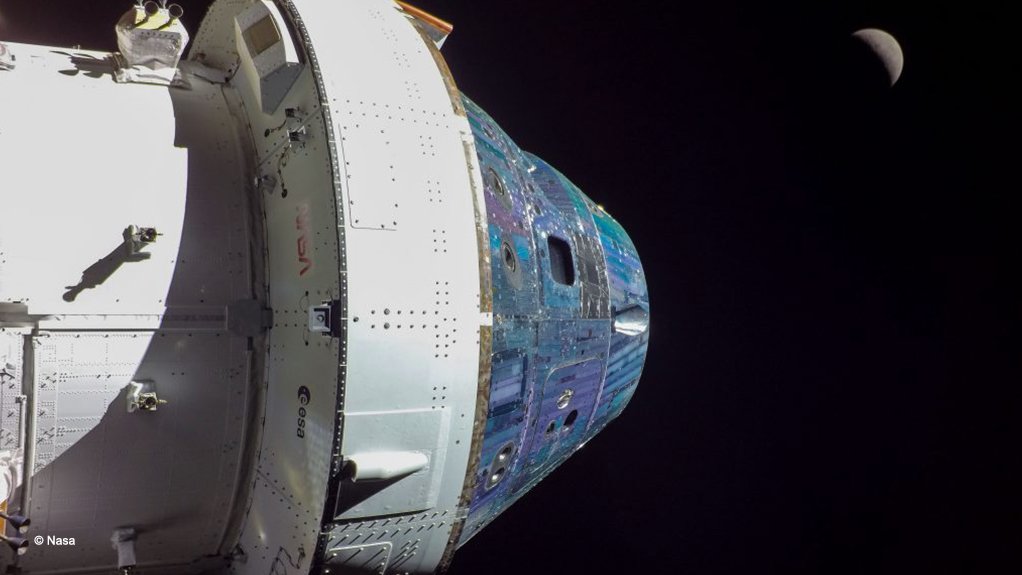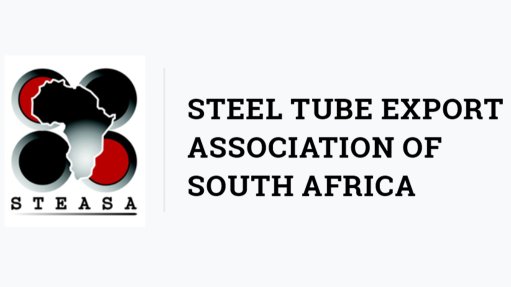Nasa delays first two crewed Artemis Moon missions


Artemis I’s Orion spacecraft, photographed (by itself) in space, beyond the Moon (visible, top right)
Photo by Nasa
The US National Aeronautics and Space Administration (Nasa) has announced that it is delaying the launch of its Artemis II and Artemis III crewed lunar missions by about a year, in each case. Artemis is the Nasa-led programme to resume human exploration of the Moon, and will see the landing of the first woman and the first person of colour on the lunar surface.
Artemis II, which will carry a crew of four, is programmed to fly to, beyond, and around the Moon, but not to land on the Moon. Previously, it was scheduled for launch towards the end of this year. Now, its launch is targeted for September 2025. The reason for the delay is safety.
Artemis I was an uncrewed test flight of the Orion spacecraft, executed at the end of last year. As intended, it resulted in a number of issues being identified, that need remedial work, before a crew can be allowed to fly in the Orion. (Artemis is the programme, Artemis I, II, III and so on are missions, Orion is the spacecraft used to execute those missions.)
“We are returning to the Moon in a way we never have before, and the safety of our astronauts is Nasa’s top priority as we prepare for future Artemis missions,” affirmed Nasa administrator Bill Nelson. “We’ve learned a lot since Artemis I, and the success of these early missions relies on our commercial and international partnerships to further our reach and understanding of humanity’s place in our solar system. Artemis represents what we can accomplish as a nation – and as a global coalition. When we set our sights on what is hard, together, we can achieve what is great.”
One of the most serious issues from the Artemis I mission concerned the Orion’s heat shield. Although the space capsule successfully re-entered the Earth’s atmosphere, during that process, pieces of the heat shield were unexpectedly lost (Nasa had previously reported this). The investigation into how and why this happened is being conducted in a most thorough manner, including sampling and testing the heat shield, and analysing data from sensors and imagers. It is expected to be concluded during the northern spring.
A second major issue was failures discovered in a circuitry component which is responsible for air ventilation and temperature control – in other words, a key element in the spacecraft’s life support system. A design flaw had been identified in that component, requiring its replacement by a new component of different design.
The third major issue concerns a battery, that would, in event of a launch abort emergency, help provide power to the Orion spacecraft after it separated from the Space Launch System rocket. The concern is that the battery would not be able to supply all the power required. This issue is still being investigated.
The delay in the Artemis III launch date, from late 2025 to at least September 2026, is a knock-on from the Artemis II delay, needed to maintain the alignment between the two missions (itself needed to ensure that any lessons from Artemis II can be incorporated into Artemis III).
“We are letting the hardware talk to us so that crew safety drives our decision-making,” highlighted Nasa associate administrator: Exploration Systems Development Mission Directorate Catherine Koerner. “We will use the Artemis II flight test, and each flight that follows, to reduce risk for future Moon missions. We are resolving challenges associated with first-time capabilities and operations, and we are closer than ever to establishing sustained exploration of Earth’s nearest neighbour under Artemis.”
Artemis IV, which will make use of the yet-to-be-launched Gateway lunar space station, remains scheduled for 2028.
Article Enquiry
Email Article
Save Article
Feedback
To advertise email advertising@creamermedia.co.za or click here
Comments
Press Office
Announcements
What's On
Subscribe to improve your user experience...
Option 1 (equivalent of R125 a month):
Receive a weekly copy of Creamer Media's Engineering News & Mining Weekly magazine
(print copy for those in South Africa and e-magazine for those outside of South Africa)
Receive daily email newsletters
Access to full search results
Access archive of magazine back copies
Access to Projects in Progress
Access to ONE Research Report of your choice in PDF format
Option 2 (equivalent of R375 a month):
All benefits from Option 1
PLUS
Access to Creamer Media's Research Channel Africa for ALL Research Reports, in PDF format, on various industrial and mining sectors
including Electricity; Water; Energy Transition; Hydrogen; Roads, Rail and Ports; Coal; Gold; Platinum; Battery Metals; etc.
Already a subscriber?
Forgotten your password?
Receive weekly copy of Creamer Media's Engineering News & Mining Weekly magazine (print copy for those in South Africa and e-magazine for those outside of South Africa)
➕
Recieve daily email newsletters
➕
Access to full search results
➕
Access archive of magazine back copies
➕
Access to Projects in Progress
➕
Access to ONE Research Report of your choice in PDF format
RESEARCH CHANNEL AFRICA
R4500 (equivalent of R375 a month)
SUBSCRIBEAll benefits from Option 1
➕
Access to Creamer Media's Research Channel Africa for ALL Research Reports on various industrial and mining sectors, in PDF format, including on:
Electricity
➕
Water
➕
Energy Transition
➕
Hydrogen
➕
Roads, Rail and Ports
➕
Coal
➕
Gold
➕
Platinum
➕
Battery Metals
➕
etc.
Receive all benefits from Option 1 or Option 2 delivered to numerous people at your company
➕
Multiple User names and Passwords for simultaneous log-ins
➕
Intranet integration access to all in your organisation

















